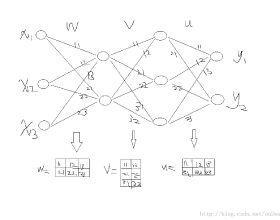Backward propagation of errors (backpropagation) is a method to minimize objective functions (e.g., loss functions) of deep neural networks by identifying optimal sets of weights and biases. Imposing constraints on weight precision is often required to alleviate prohibitive workloads on hardware. Despite the remarkable success of backpropagation, the algorithm itself is not capable of considering such constraints unless additional algorithms are applied simultaneously. To address this issue, we propose the constrained backpropagation (CBP) algorithm based on a pseudo-Lagrange multiplier method to obtain the optimal set of weights that satisfy a given set of constraints. The defining characteristic of the proposed CBP algorithm is the utilization of a Lagrangian function (loss function plus constraint function) as its objective function. We considered various types of constraints--binary, ternary, one-bit shift, and two-bit shift weight constraints. As a post-training method, CBP applied to AlexNet, ResNet-18, ResNet-50, and GoogLeNet on ImageNet, which were pre-trained using the conventional backpropagation. For all cases, the proposed algorithm outperforms the state-of-the-art methods on ImageNet, e.g., 66.6%, 74.4%, and 64.0% top-1 accuracy for ResNet-18, ResNet-50, and GoogLeNet with binary weights, respectively. This highlights CBP as a learning algorithm to address diverse constraints with the minimal performance loss by employing appropriate constraint functions.
翻译:错误的背向传播(背向传播)是一种通过确定最佳重量和偏差组合,最大限度地减少深神经网络客观功能(例如损失功能)的方法。为了减轻硬件上令人望而却步的工作量,通常需要对重量精度施加限制。尽管背面反向分析取得了显著的成功,但算法本身无法考虑这些制约因素,除非同时应用额外的算法。为了解决这一问题,我们提议采用基于假Lagrange乘数法的受限制的回向分析算法,以获得符合一套特定限制的最佳权重。拟议的 CBP 算法的界定特征是利用Lagrangian 函数(损失函数加约束功能)作为其客观功能。我们考虑了各种类型的制约-二进制,除非同时应用额外的算法。作为一种培训后方法,我们提议对AlexNet、ResNet-18、ResNet-50和GoogLeNet 网络上的各种权重组合,这是利用常规的后向调法进行预先培训的。对于所有案例,将Lagrange-net的功能(损失函数加约束)。



